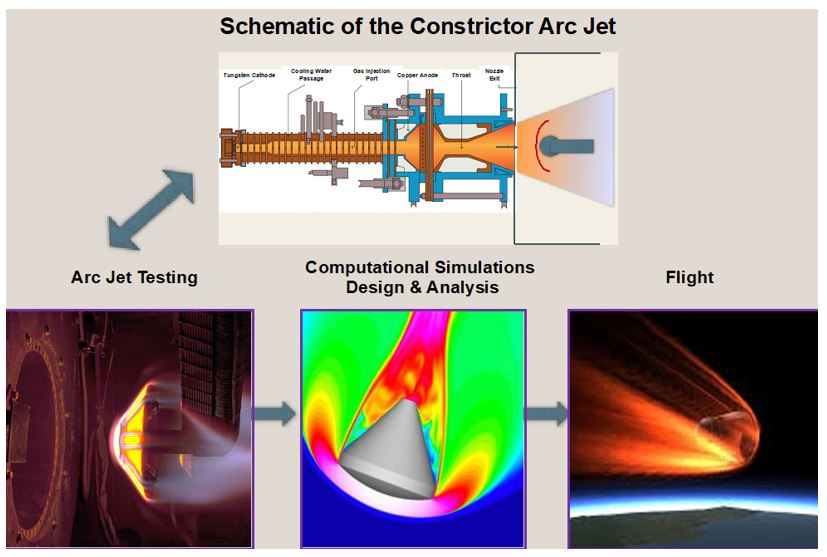Graphical Abstract

Abstract
This abstract is associated with the keynote address to be given to honour Dr. Koo on his 70th birthday WebSymposium. This talk will focus on “arc jet” test facilities that are essential for exploration of space. Its use started with the Apollo Program in the 1960’s and continues today. The 7 decades of missions have relied on Arc jet for ensuring fail-safe thermal protection system development and certification.
Human presence in space was very quickly established between the 1950’s and 1960’s. It was followed, soon after by planetary explorations of Mars, Venus, and Jupiter in the following two decades. These missions with the capsule carrying humans or landers/probes carrying scientific instruments decelerate during atmospheric entry and generate extreme heat. To protect the crew or the science instruments, the heat of entry had to be dealt with using fail-safe thermal protection system. The combination of arc jet testing and flight testing allowed for rapid development of thermal protection materials and integrated blunt body systems for Apollo. That was not viable for planetary missions and arc jet testing became the standard for not only new TPS development but also verification of flight hardware. The energy required to heat the air to conditions relevant for testing is enormous. Though Arc jet provide relevant test conditions, the test articles where nowhere near the flight scale. They are two to three orders of magnitude small. Albeit small scale, the data from the testing has provided to be very useful.
Arc jet is a high energy wind-tunnel that produces test conditions like that of heating experienced by spacecraft entering planetary atmospheres. The arc jet design, as well as its operations, are complex. To be able to relate the ground truth from testing very small coupons ranging in size from (1 inch – 1 ft) to what can happen in actual flight requires greater understanding of the high temperature aerothermodynamics and material response. Entry systems that carry humans or landers can be ~ 20ft in diameter (Apollo, Orion, and Mars 2020) to ~100 ft in length (Space Shuttle Orbiter). The developments related to ablative and reusable thermal protection systems were possible due to the knowledge gained from arc jet testing. The arc jet truly was a key that allowed us to land and bring back astronauts safely from the Moon, send large rovers to the surface of Mars and explore Venus and Jupiter with probes. This talk will provide the basics of how an arc jet works, how the testing is done and how the data collected is used to develop and apply thermal response models for spacecraft TPS design.
Keywords
Thermal protection system; spacecraft entry; arc jet; robotic and human missions.
Video Proceedings of Advanced Materials

Upcoming Congress



